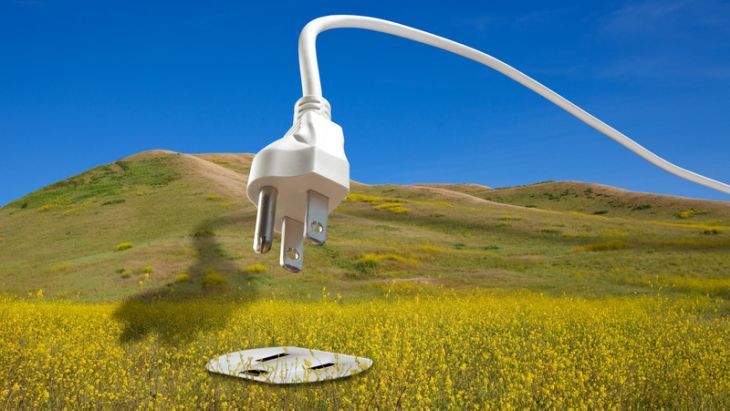Bioenergy – solid biofuels, biogas, biomethane and liquid biofuels – is already making a significant contribution to the world’s energy supply, but half of the deployment is now taking the form of traditional bioenergy uses for cooking and heating, mainly in developing countries. The situation needs to change, says Dumitru Chisăliță, president of the Intelligent Energy Association. In a press release, he calls for the inefficient use of biomass to be replaced by modern, clean energy solutions.
Modern forms of bioenergy are increasingly used to generate electricity, for heat in buildings and industry, for transport fuels and as an industrial feedstock. For example, biomass-based aviation fuel is the most promising renewable option in the short and medium term.
However, increasing bioenergy use and achieving wider socio-economic benefits presents its own challenges.
Ten major challenges to be addressed urgently
- High capital investment is a major barrier to large-scale production of lignocellulosic biofuels. The capital costs of building cellulosic biorefineries vary depending on the choice of feedstock, the conversion technology and the size of the biorefinery.
- Policy uncertainty and complex institutional structures are major barriers to most renewables, including bioenergy. Currently, bioenergy development is not receiving enough political attention. Bioenergy policy-making usually involves different government departments and cross-sectoral actors. The Romanian government should establish a long-term bioenergy strategy with clearly defined objectives and cross-sectoral coordination to build confidence among investors and project developers. Mandates for bioenergy consumption and reduction of fossil fuel use can also be used to increase market demand.
- Financial and economic barriers include lack of fossil fuel subsidies, high costs and lack of access to affordable finance. Without measures to address the negative impacts of burning fossil fuels, most bioenergy options cost more than fossil fuels. Financial and fiscal support measures can ensure that bioenergy production and use is profitable for businesses and affordable for end consumers. Measures include phasing out fossil fuel subsidies, a lower tax burden or grants and subsidies to increase the competitiveness of bioenergy, and measures to facilitate affordable financing.
- Low technological readiness remains another major barrier to new bioenergy technologies such as biomass-based aviation fuels and biomass for high-temperature industrial processes. Added to this is a lack of infrastructure, such as the need for on-site biomass storage and the ability of natural gas grids to accommodate biomethane. Policy support for innovation through research, development and demonstration can increase technology readiness and accelerate commercialisation.
- Weak supply chains are one of the most important barriers. These include unstable supply of raw materials, lack of skilled workers and sustainability risks. Quality control and standardisation regulations can improve product quality and operational efficiency. Training, education and capacity building can improve skills in the design, installation, operation and maintenance of bioenergy systems. Most importantly, a context-based sustainability policy framework with appropriate measures is urgently needed to ensure good sustainable practices.
- Lack of awareness of bioenergy products and their benefits can also affect stakeholder engagement. Public campaigns and information exchange activities raise public and business awareness. Accessible information on the availability and location of bioenergy resources (e.g. agricultural and forest residues, organic waste) and infrastructure can also help project developers identify bioenergy feedstocks and the best project locations.
- The lack of information on the availability of raw materials means that there is no mechanism to show the availability of raw materials such as agricultural residues or waste and the price formation process for them. Hence the high cost of biofuel feedstock.
- Farmers’ poor preparedness to take economic risks with perennials, crops that do not bring an income every year. Unavailability of the necessary investments for harvesting the raw material (e.g. specialised harvesting equipment, fertiliser and weed control materials, etc.).
- Cultural barriers to introducing new crops into a monoculture landscape. In general, farms in Romania are small farms and the ageing of the farming population reduces farmers’ willingness to enter new markets and grow new crops. The importance of sustainable crop-based biofuels for generating socio-economic benefits in rural areas is underestimated.
- Lack of clarity on land availability and environmental constraints for non-food energy crops. Lack of harmonised regulations on sustainable agricultural practices for both waste biomass and dedicated energy crops, and on sustainable forest management.
Increasing the use of bioenergy is an essential component of an energy transition that aligns with integrated energy-environment policies. Bioenergy must make a greater contribution to meeting energy demand in all end uses in the coming decades. While all stakeholders have a role to play here, policy makers have a particular opportunity to make this change: the right policy mix can increase the supply and use of bioenergy, improve its sustainability and minimise any negative impacts.
